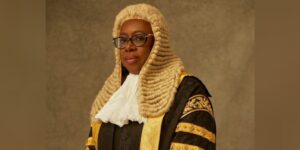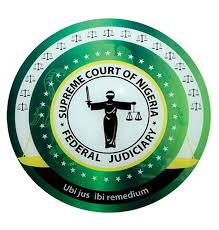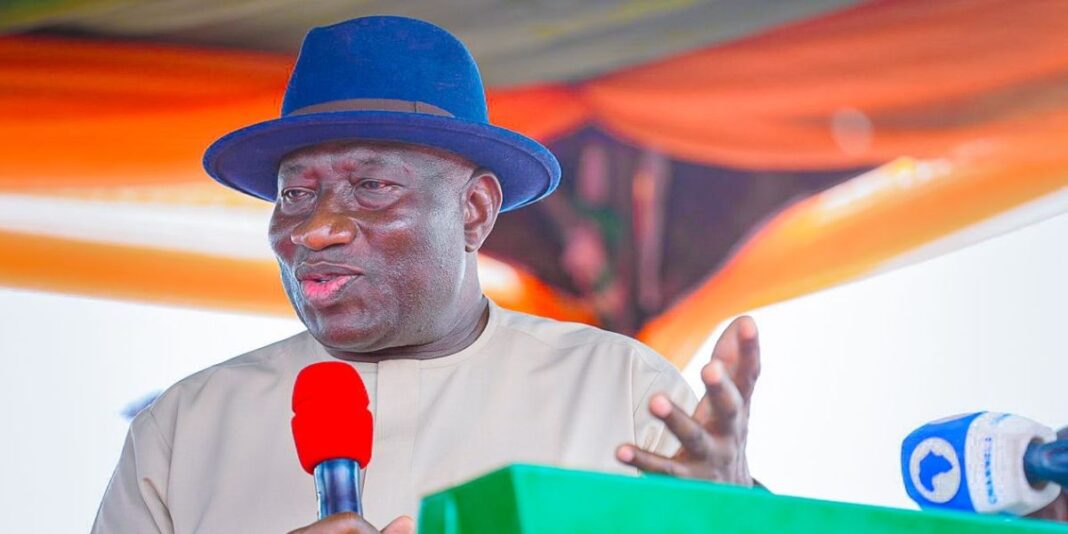1) What the Nigerian Constitution actually says


The 4-year term is fixed by oath
> “The President shall vacate his office at the expiration of a period of four years commencing from the date, when – (a) in the case of a person first elected as President… he took the Oath of Allegiance and the oath of office; ….”
Two prior elections bar a fresh run
> “A person shall not be qualified for election to the office of President if… (b) he has been elected to such office at any two previous elections.” (s.137(1)(b)).
2018 Fourth Alteration (No. 16): the “successor rule” (new s.137(3))
> “(3) A person who was sworn-in as President to complete the term for which another person was elected as President shall not be elected to such office for more than a single term.” (emphasis added).
Implication: Once you first came in by completing another’s term, you can be elected only once thereafter. Jonathan was sworn in in 2010 to complete President Yar’Adua’s term, and elected in 2011 once. Any further election after the 2018 amendment would breach s.137(3).
2) Supreme Court guidance on tenure counting (analogy that binds lower courts)

In Marwa v. Nyako (2012), the Supreme Court settled how to count executive tenure after multiple oaths/re-runs (governors’ cases, but the constitutional logic is the same: tenure tracks the first oath, and courts must resist any device that stretches time in office).
> “Governors’ tenure of four years is determined by when they first take the oaths of office and allegiance.”
“The nullification of an election does not void the actions taken… nor does it nullify the oaths they took.”
And the First Alteration Act had already required courts to count time already spent before a re-run in the four-year term calculation (s.135(2A)/s.180(2A)):
> “In the determination of the four year term… the time spent in office before the date the election was annulled, shall be taken into account.”
Why this matters: The Supreme Court’s ratio makes clear courts must enforce strict term accounting and prevent functional tenure-elongation. That principle dovetails with s.137(3): once you finish someone else’s term, you get one election to that office—no more.
3) The 2022 Bayelsa (Federal High Court, Yenagoa) decision—and what it actually held

Justice Isah Dashem (FHC/YNG/CS/86/2022) held Jonathan could run in 2023, reasoning (a) he had been elected President only once (2011), and (b) s.137(3) (2018) should not apply retrospectively to take away a right he supposedly acquired by 2015:
> “The evidence before this Court points to the conclusion that the 1st Defendant has only been elected into the Office of the President… in 2011.”
“The provisions of subsection (3) of Section 137… took effect from June 7, 2018… [and] do not enjoy retrospective application.”
“I… declare that the 1st Defendant is not disqualified by the provisions of Section 137(1)(b) and (3)… from contesting… in the 2023 General Elections.”
Two problems with relying on this to justify a 2027 run:
1. Hierarchy: A Federal High Court cannot override the Constitution’s text (post-2018) or Supreme Court principles on tenure counting. The 2018 insertion (s.137(3)) is clear and controls any election after its commencement—no “retroactivity” is needed. The question in 2027 is simply: Would the next election result in him being “elected… more than a single term” after succession? Yes—it would be a second post-succession election, which s.137(3) forbids.
2. Timing: Even on the Yenagoa court’s own logic, the legal landscape for future elections is governed by the law as it stands now. Section 137(3) existed well before 2027. Its bar bites at the time of the proposed election, not in 2010 or 2015.
4) The clean legal syllogism (no politics, just law)
Major premise (Constitution, s.137(3)): If you were sworn-in to complete another’s term, you “shall not be elected” President more than once.
Minor premise (facts): Jonathan was sworn in in 2010 to complete Yar’Adua’s term and was elected once in 2011.
Conclusion: Any new election after 2018 that would make him elected again breaches s.137(3). Therefore, he is not eligible to be elected President again.
The Supreme Court’s tenure jurisprudence supports this strict, oath-anchored reading; and lower-court contrary views cannot trump constitutional text or apex-court doctrine.
5) Comparative guardrails (why courts enforce this elsewhere)
United States – 22nd Amendment:
> “No person shall be elected to the office of the President more than twice, and no person who has held the office… for more than two years of a term to which some other person was elected President shall be elected… more than once.”
Courts and practice enforce this bright line.
The logic is identical to Nigeria’s s.137(3): succession narrows how many times you can thereafter be elected.
6) What to do about the Bayelsa ruling
Bottom line: The 2022 Yenagoa decision is a subordinate court ruling that cannot supersede (i) the Supreme Court’s tenure doctrine and (ii) the 2018 constitutional text. If the matter is re-litigated, the Court of Appeal and, ultimately, the Supreme Court should bring the law back to its plain meaning and hierarchy.
On accountability: under Section 153(1) and Part I, Third Schedule of the Constitution, the National Judicial Council (NJC) has authority over discipline of judicial officers. If there’s evidence of misconduct (as opposed to mere legal error), any person may petition; the NJC has Judicial Discipline Regulations and a Code of Conduct to process such complaints.
Caveat: Disagreeing with a judge’s interpretation is not, by itself, misconduct. The right channel is appellate review. When misconduct is alleged, NJC—not public pressure—handles discipline, to protect judicial independence.

7) Plain-English verdict
Text controls: s.137(3) is clear and already in force.
Facts are fixed: Jonathan succeeded a deceased President (2010) and was elected once (2011).
Result: He cannot lawfully be elected again. Any attempt to run now would collide with the 2018 Fourth Alteration. The Supreme Court’s tenure cases reinforce a strict, oath-based approach that bars functional tenure-stretching. The Bayelsa ruling does not—and cannot—change that.
Appendix: Key quotations (for editors)
Constitution—Term length: “The President shall vacate his office at the expiration of a period of four years commencing from the date, when… he took the Oath of Allegiance and the oath of office.” (s.135(2)).
Constitution—Prior elections bar: “A person shall not be qualified… if… he has been elected… at any two previous elections.” (s.137(1)(b)).
2018 Fourth Alteration—Successor rule: “A person who was sworn-in as President to complete the term for which another person was elected… shall not be elected… for more than a single term.” (s.137(3)).
Supreme Court—Tenure runs from first oath: “Governors’ tenure of four years is determined by when they first take the oaths of office and allegiance… [and] nullification does not void the oaths.” (Marwa v. Nyako, SC, 27 Jan 2012).
First Alteration—No “reset” after re-run: “The time spent in office before the date the election was annulled, shall be taken into account.” (s.135(2A)).
Bayelsa FHC (2022) — contrary view: “The provisions of Section 137(3)… do not enjoy retrospective application… I… declare that the 1st Defendant is not disqualified… in the 2023 General Elections.” (FHC/YNG/CS/86/2022).

Headlinenews.news Special Publication.




